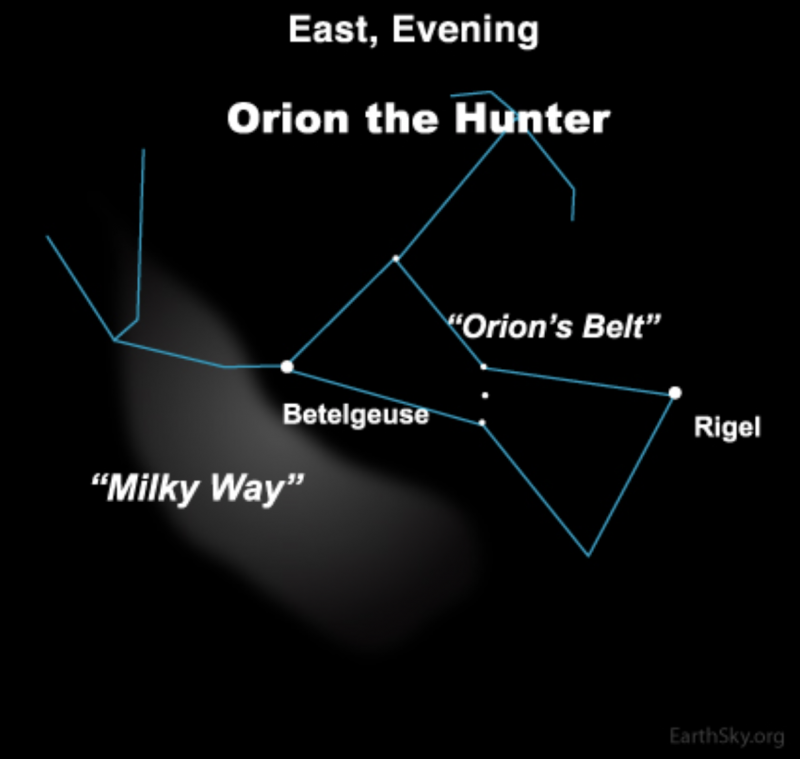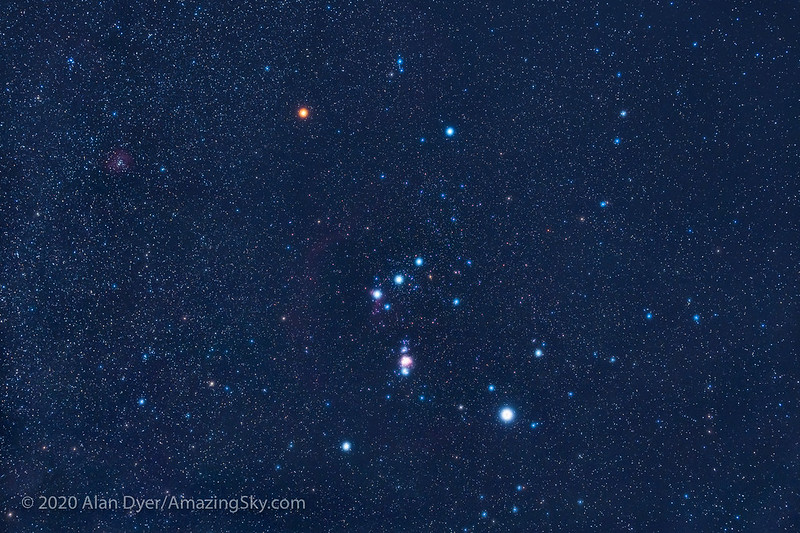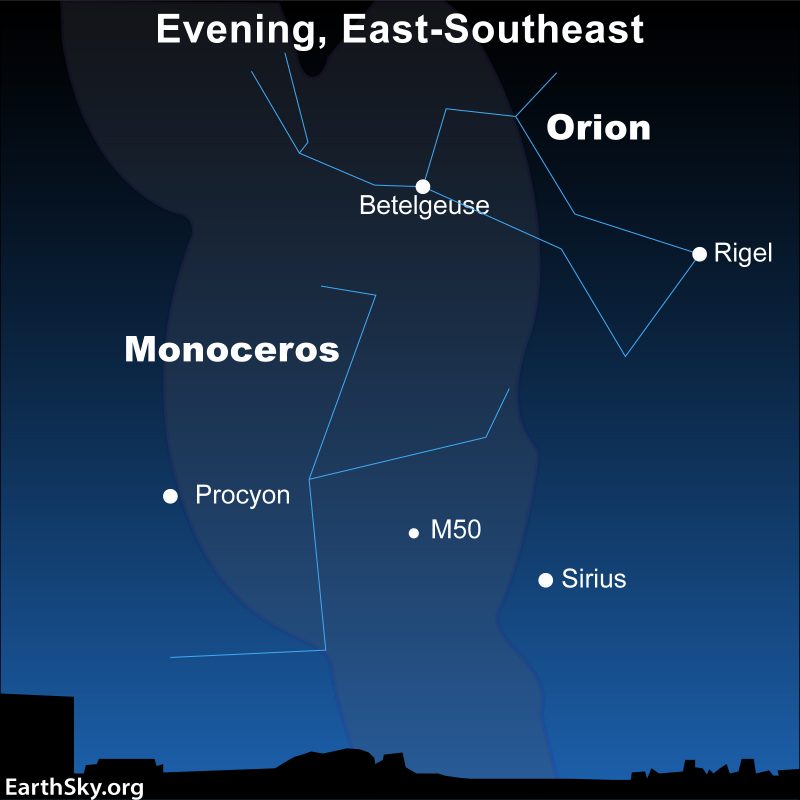
Orion the Hunter on December evenings
Tonight – or any December evening – find the famous constellation Orion the Hunter. It’s bright and can be seen from inside smaller cities. And the three stars that make up Orion’s Belt – in a short, straight row at the Hunter’s midsection – are very noticeable. If you have a dark sky, you can see something else: the starry band of the Milky Way – the edgewise view of our home galaxy – running behind Orion.
As seen from the Northern Hemisphere, after Orion rises, the three stars of Orion’s Belt jut more or less straight up from the horizon. Look on either side of the Belt stars for two very bright stars. One is the reddish star Betelgeuse. The other is bright, blue-white Rigel.
Throughout December, the constellation Orion is well up by mid-evening (by that we mean by midway between your local sunset and your local midnight). Like all of the starry sky, as Earth moves around the sun, Orion rises earlier each evening. And, by late December, Orion will be seen at nightfall or early evening. That’s true for both the Southern and Northern Hemispheres.
Orion is a summer constellation for the Southern Hemisphere.
But we in the Northern Hemisphere associate Orion with winter nights. That’s because this constellation is up throughout our long December and January nights.

Use Orion to find the Milky Way
Because so many people are familiar with Orion, this constellation is a great jumping off spot for finding the starry pathway of the Milky Way. You’ll need a dark sky to see the hazy arc of stars running behind the bright red star Betelgeuse.
Looking at the Milky Way in our sky is looking edgewise into the disk of our galaxy. We see the galaxy as the combined glow of billions of stars. You might know that – in the month of August – the Milky Way appears broad and bright during the evening hours. At that time of year, in the evening, all of us on Earth are gazing toward the star-rich center of the galaxy.
Now Earth has traveled in its orbit around the sun, and our evening sky is pointing out in a different direction. If you see the Milky Way behind the constellation Orion this month, you might think it’s very faint in contrast to the August Milky Way. It is fainter, because now we’re looking toward the galaxy’s outer edge. And now there are fewer stars between us and intergalactic space.

Bottom line: You can find one of the most famous constellations – Orion the Hunter – plus see the Milky Way tonight.
Read More: Orion’s Belt and the Celestial Bridge
Easily locate stars and constellations during any day and time with EarthSky’s planisphere.
The post Orion the Hunter and the Milky Way first appeared on EarthSky.
0 Commentaires